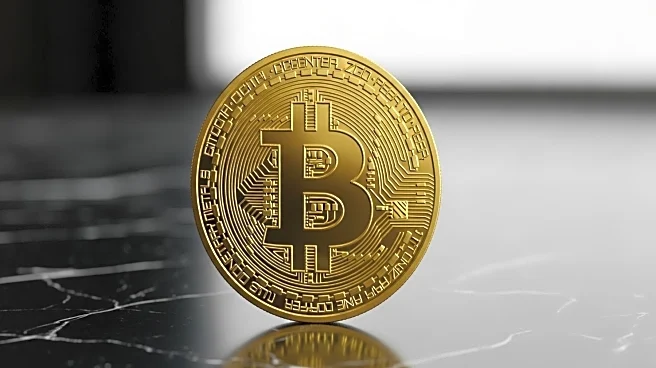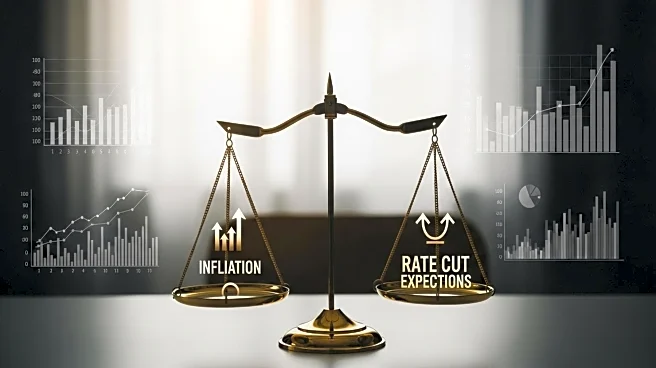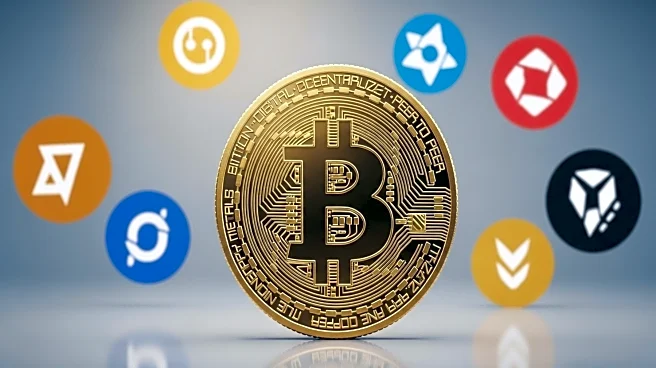What's Happening?
The July 2025 U.S. Personal Consumption Expenditures (PCE) report has created mixed signals for markets, with core inflation rising to 2.9% year-over-year while headline PCE stagnated at 2.6%. This has intensified speculation about the Federal Reserve's next move, with an 87.2% probability of a September rate cut. Bitcoin's role as a hedge against inflation is gaining relevance, supported by institutional adoption. Bitcoin ETFs now manage over $70 billion in assets, and corporate holdings like MicroStrategy's 630,000 BTC are normalizing the asset in traditional portfolios. On-chain data shows a shift from speculative trading to long-term wealth preservation.
Why It's Important?
Bitcoin's appeal as a store of value is reinforced by inflationary pressures and anticipated accommodative monetary policy. Institutional adoption is driving Bitcoin's trajectory, with significant assets under management and long-term holdings. Regulatory developments are facilitating institutional integration, enhancing Bitcoin's role in diversified portfolios. Despite its volatility, Bitcoin remains a key asset for hedging against macroeconomic uncertainties, offering a potential counterbalance to traditional investments.
What's Next?
The Fed's decision on rate cuts in September will be crucial for Bitcoin's market dynamics. A rate cut could boost risk appetite and drive Bitcoin higher, while a delay might test its inflation-hedging narrative. Institutional investors appear committed to long-term holdings, indicating growing consolidation. The evolving role of Bitcoin in investment strategies will continue to be shaped by macroeconomic signals and regulatory frameworks.












